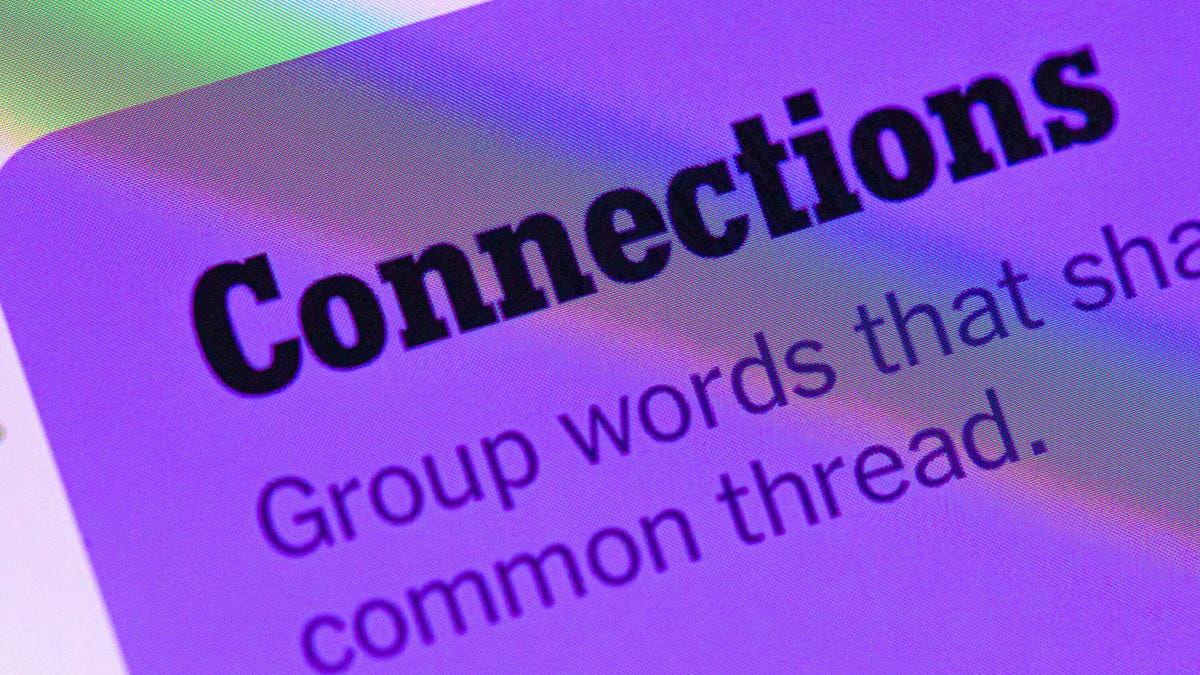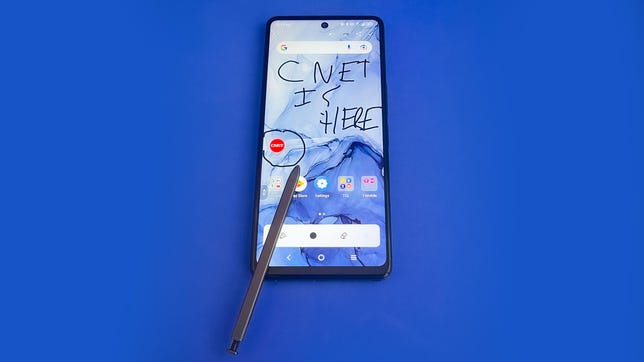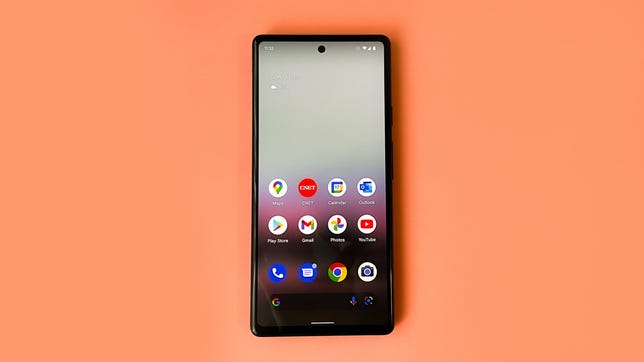Technologies
Best Phones Under $300: 5G Phones at Starter Prices
These phones prioritize essential features while providing a few productivity perks.

The best phones under $300 offer a taste of premium features, but in a device that still very much feels like a budget phone. That’s not a bad thing: These phones can make calls, send texts and run most apps and games for hundreds of dollars less than the iPhone 14 or Galaxy S23. They also provide access to 5G, which is important if you want to hold onto your device for a while, and some even come with a built-in stylus.
But I’m going to level with you: We have yet to use a phone in the $200 to $300 price range that feels like an excellent value. The absolute best picks in this category tend to be more expensive devices that are frequently discounted to $299 when on sale. For instance, Google’s $449 Pixel 6A is our current best phone for under $500, and it’s often discounted to $299.
That’s not to say phones in the $200 to $300 price range should be avoided. Some include decent cameras, a headphone jack, expandable storage and NFC support for mobile payments.
What are the tradeoffs with phones that cost $300 or less?
These cheaper devices tend to scale back significantly in one area or another in order to achieve those low prices. Most commonly, these drawbacks include limited software support, carrier support or bloatware (preloaded apps that you never asked for). These tradeoffs often mean that these devices should not be used after two to three years, especially after security update support ends.
It’s also notable that while these phones retail for $200 to $300, many of them are often available at a deep discount — or even for free — as part of a carrier subsidy deal. If you are planning to stick with the same wireless carrier for two years, these phones could just become part of the cost of your service.
Best phones under $300
Eli Blumenthal/CNET
The $299 OnePlus N20 5G isn’t an exciting phone, but it more than gets the job done for most situations. Unlike several phones on this list, you can buy it unlocked from OnePlus. It also provides high-end features we don’t always see at this price, like an in-screen fingerprint reader, faster 33W charging, 6GB of RAM and NFC for mobile payments. Despite being available directly from OnePlus, the N20 works with AT&T and T-Mobile but does not work with Verizon. The phone’s 5G support also only works through T-Mobile.
In his OnePlus N20 review, CNET Senior Editor Eli Blumenthal found the phone’s 64-megapixel main camera, 2-megapixel macro camera and 2-megapixel monochrome lens to take decent photos during the daytime. But its cameras struggle in the evening, which is a common issue on cheaper phones. The N20 also includes a 16-megapixel front-facing camera located in the top left of the phone’s display.
The phone is also only getting one major software update from Android 11 to Android 12, but will receive three years of security updates. As a result, despite the phone’s decent specs and slightly wider availability, it only makes sense to hang onto this phone for two to three years.
Mike Sorrentino/CNET
Reviewing the $258 TCL Stylus 5G was a journey for me last year. Specs-wise, it has a lot that I enjoyed. The phone’s TCL NxtVision HDR setting provided enhanced colors when I played games, TCL made minimal changes to Android 12 and I especially enjoyed the magnetic stylus that fits securely into its own slot on the phone.
However, the big reason why my review took four months is because of repetitive software bugs that make the phone otherwise tough to recommend. I experienced frequent restarts while using the phone and Bluetooth connectivity issues, the latter of which was eventually fixed through a software update. This phone is also locked to T-Mobile completely, so it can’t be used on other carriers and is filled with T-Mobile apps that are challenging to remove.
Yet if you absolutely must have a stylus and your budget is under $300, this is one of the better overall picks. But be wary of software issues, and remember the phone is only getting one major software update along with two years of security updates.
Mike Sorrentino/CNET
The $228 OnePlus Nord N300 5G is my favorite phone under $300. The only reason why I cannot recommend it above the N20 is because this phone is locked to T-Mobile. Despite being around $80 cheaper than the other OnePlus phone, it still has 33-watt fast charging, a 90Hz refresh rate display and a 48-megapixel main camera that does a decent job with photos and video. Its matte black look that highlights its two camera lenses also makes it one of the nicer-looking budget phones I’ve tested. The N300 improves on the N20 with its dual stereo speakers, over the single speaker on the N20, and I personally prefer the side fingerprint sensor over in-screen options like on the N20.
But apart from the availability issue, the N300 also suffers from a short software support timeline. The N300 will only get one major software update from Android 12 to Android 13 and two years of security updates. Even though that’s somewhat normal for the category, I still consider it a major drawback. There’s also a dose of T-Mobile bloatware, but at this price it’s easier to swallow.
If you are shopping specifically for a phone that works with T-Mobile or its Metro brand, the $228 OnePlus Nord N300 is definitely a solid choice. Just recognize you cannot take the phone to other carriers, and it won’t be a great option after two years of use.
Jessica Fierro/CNET
The Light Phone 2 is a very different kind of phone. It’s meant for people seeking freedom from the constant stream of notifications, but still want a phone that looks nice. But despite its somewhat limited functionality, this phone still costs $299.
The Light Phone 2 supports texts, phone calls, music playback, podcasts, mobile hotspot functionality and limited GPS support for directions on its E Ink screen. It does not have a camera, web browser, email access or other common apps like news or messaging apps.
My colleague Jessica Fierro gave life with the Light Phone 2 a try, and she enjoyed how the phone helped her stay more focused on the world around her. However she found the slower texting speed on the E Ink display to be challenging to adjust to, and could not fully make the switch because for work she needs some degree of social media access in order to stay up on trends.
The absence of many modern features is the entire point of the Light Phone 2. It’s a device for people who intentionally just want essential communications on a screen that’s more like a Kindle’s display than the one you’d find on a Samsung Galaxy device.
The Light Phone 2 is certainly not for everybody, but it could be worth considering for someone who wants their phone to do less. Fans of conventional phones should consider the wealth of feature phones and flip phones that still exist first — which are often free with a carrier deal or available for under $100.
Lisa Eadicicco/CNET
Admittedly I’m cheating by getting this phone into the list, but Google’s Pixel 6A has been discounted to $299 a lot lately and is an easy recommendation when it’s been discounted into a budget phone range.
Regularly $449, the Pixel 6A won our Editors’ Choice Award last year. In her review, CNET Senior Editor Lisa Eadicicco praised the phone for its great camera, Pixel-exclusive features like Magic Eraser, its colorful design and being among the first to get new Android updates.
While it’s likely that Google announces a sequel 7A phone as soon as the next Google I/O development conference, scheduled for May 10, the current Pixel 6A is still an excellent pick for the price if you can get it at its $299 price. But if you see the phone go back to its original $449 price between now and May 10, and you aren’t in dire need of a new device, I would then say wait for the rumored Pixel 7A.
How we test phones
CNET tests phones by using them daily and comparing them with competing phones to assess their value. We consider a variety of factors, such as the phone’s screen, cameras, battery life, software, performance, features and ease of use.
For low-priced phones, we make sure these devices consistently work well when used in a number of situations. This includes many day-to-day activities like reading the news, listening to music, watching videos, texting, playing games and multitasking.
We test phone cameras in a range of environments, taking test photos outdoors in the daytime and nighttime, and indoors in darker settings. We use cameras in active environments, like a concert or a sports game, and with a variety of subjects including people, objects and pets. We also test available camera settings, especially those that are rarer in these price ranges such as Night mode and Portrait mode.
These anecdotal phone experiences are also combined with benchmark tests such as Geekbench performance testing and battery testing. We monitor battery life in two ways: By seeing how much power is typically left after a day of normal usage and by seeing how much battery is depleted during a more intensive hour with the phone. For the latter test, we’ll check how the phone’s battery holds up to a series of video calls, gaming, video streaming and web browsing.
Phones under $300 FAQs
What about Apple’s iPhone?
Apple does not currently sell any iPhone options between $200 and $300. The cheapest new iPhone you can get is the iPhone SE at $429. That iPhone is a great value for its fast processor and great camera, but held back by its dated design that harkens back to the iPhone 6, 7 and 8.
If you don’t mind getting a preowned device and want something with a bigger screen, as of this writing Verizon sells a 64GB iPhone 11 for $275.
You can also get the 2020 version of the iPhone SE as a refurbished model between $200 and $300 on websites like Amazon and Best Buy, but beware of each store’s policies for refurbished devices. Especially make sure the refurbished device includes a warranty for repairs, since without one you may have to pay Apple or another retailer a high price for a screen repair or other accidental damage.
Best phones under $300: OnePlus Nord N20 5G vs. TCL Stylus 5G vs. OnePlus Nord N300 5G vs. Google Pixel 6A
| OnePlus Nord N20 5G | TCL Stylus 5G | OnePlus Nord N300 5G | Google Pixel 6A* | |
|---|---|---|---|---|
| Display size, resolution | 6.43-inch FHD+ AMOLED display | 6.81-inch FHD+ display (1080 x2400 pixels) | 6.56-inch IPS LCD display; 720p resolution; 90Hz refresh rate | 6.1-inch OLED; (1080 x 2400); 60Hz |
| Pixel density | 409ppi | 395ppi | 269ppi | 429 ppi |
| Dimensions (inches) | 6.2 x 2.8 x 0.29 in | 6.67 x 3.01 x 0.35 in | 6.4 x 2.9 x 0.3 in | 6.0 x 2.8 x 0.35 in |
| Dimensions (millimeters) | 159.9 x 73.2 x 7.5 mm | 169.6 x 76.5 x 8.9 mm | 163.8 x 75.1 x 7.99 mm | 152.2 x 7.18 x 8.9 mm |
| Weight (ounces, grams) | 173g or 6.1 oz | 213g or 7.51 oz | 190g or 6.7 oz | 6.3 oz; 178g |
| Mobile software | Android 11 | Android 12 | Andorid 12 | Android 12 |
| Camera | 64-megapixel (main), 2-megapixel (macro), 2-megapixel (monochrome lens) | 50-megapixel (main), 5-megapixel (wide), 2-megapixel (macro), 2-megapixel (depth sensor) | 48-megapixel (main), 2-megapixel (depth lens) | 12.2-megapixel (wide), 12-megapixel ultra wide) |
| Front-facing camera | 16-megapixel | 13-megapixel | 16-megapixel | 8-megapixel |
| Video capture | 1080p/720p at 30 fps | 1080p at 30fps | 1080p/720p at 30 fps | 4K |
| Processor | Qualcomm Snapdragon 695 5G | MediaTek Dimensity 700 5G | MediaTek Dimensity 810 | Google Tensor |
| RAM/Storage | 6GB/128GB | 4GB/128GB | 4GB/64GB | 6GB RAM/128GB storage |
| Expandable storage | Up to 512GB | Up to 2TB | Up to 1TB | None |
| Battery/Charger | 4,500mAh; 33W charging | 4,000mAh; 18W charging | 5,000mAh; 33W charging | 4,410 mAh capacity; 18-watt fast charging (adapter sold separately) |
| Fingerprint sensor | In-screen | Side fingerprint sensor | Side fingerprint sensor | Under display |
| Connector | USB-C | USB-C | USB-C | USB C |
| Headphone jack | Yes | Yes | Yes | None |
| Special features | NFC, Face Unlock, HDR, Screen Flash, Face retouching | Stylus with built-in storage, producitivity software, NxtVision HDR mode | Dual speakers, NFC, Face Unlock, HDR, Portrait, Face retouching | 5G-enabled, 18W fast charging, WiFi 6E, security updates for 5 years, Android OS updates for 3 years, dual SIM, IP67 water resistance |
| Price off-contract (USD) | $299 | $258 | $228 | $449 (*$299 when on sale) |
Technologies
Today’s NYT Connections Hints, Answers and Help for Dec. 24, #927
Here are some hints and the answers for the NYT Connections puzzle for Dec. 24 #927

Looking for the most recent Connections answers? Click here for today’s Connections hints, as well as our daily answers and hints for The New York Times Mini Crossword, Wordle, Connections: Sports Edition and Strands puzzles.
Today’s NYT Connections puzzle is kind of tough. Ooh, that purple category! Once again, you’ll need to look inside words for hidden words. Read on for clues and today’s Connections answers.
The Times has a Connections Bot, like the one for Wordle. Go there after you play to receive a numeric score and to have the program analyze your answers. Players who are registered with the Times Games section can now nerd out by following their progress, including the number of puzzles completed, win rate, number of times they nabbed a perfect score and their win streak.
Read more: Hints, Tips and Strategies to Help You Win at NYT Connections Every Time
Hints for today’s Connections groups
Here are four hints for the groupings in today’s Connections puzzle, ranked from the easiest yellow group to the tough (and sometimes bizarre) purple group.
Yellow group hint: Cash out.
Green group hint: Chomp
Blue group hint: Walleye and salmon.
Purple group hint: Make a musical sound, with a twist.
Answers for today’s Connections groups
Yellow group: Slang for money.
Green group: Masticate.
Blue group: Fish.
Purple group: Ways to vocalize musically plus a letter.
Read more: Wordle Cheat Sheet: Here Are the Most Popular Letters Used in English Words
What are today’s Connections answers?
The yellow words in today’s Connections
The theme is slang for money. The four answers are bacon, bread, cheese and paper.
The green words in today’s Connections
The theme is masticate. The four answers are bite, champ, chew and munch.
The blue words in today’s Connections
The theme is fish. The four answers are char, pollock, sole and tang.
The purple words in today’s Connections
The theme is ways to vocalize musically plus a letter. The four answers are hump (hum), rapt (rap), singe (sing) and whistler (whistle).
Don’t miss any of our unbiased tech content and lab-based reviews. Add CNET as a preferred Google source.
Toughest Connections puzzles
We’ve made a note of some of the toughest Connections puzzles so far. Maybe they’ll help you see patterns in future puzzles.
#5: Included «things you can set,» such as mood, record, table and volleyball.
#4: Included «one in a dozen,» such as egg, juror, month and rose.
#3: Included «streets on screen,» such as Elm, Fear, Jump and Sesame.
#2: Included «power ___» such as nap, plant, Ranger and trip.
#1: Included «things that can run,» such as candidate, faucet, mascara and nose.
Technologies
Today’s NYT Mini Crossword Answers for Wednesday, Dec. 24
Here are the answers for The New York Times Mini Crossword for Dec. 24.

Looking for the most recent Mini Crossword answer? Click here for today’s Mini Crossword hints, as well as our daily answers and hints for The New York Times Wordle, Strands, Connections and Connections: Sports Edition puzzles.
Need some help with today’s Mini Crossword? I’m Irish-American, but yet 6-Down, which involves Ireland, stumped me at first. Read on for all the answers.. And if you could use some hints and guidance for daily solving, check out our Mini Crossword tips.
If you’re looking for today’s Wordle, Connections, Connections: Sports Edition and Strands answers, you can visit CNET’s NYT puzzle hints page.
Read more: Tips and Tricks for Solving The New York Times Mini Crossword
Let’s get to those Mini Crossword clues and answers.
Mini across clues and answers
1A clue: Wordle or Boggle
Answer: GAME
5A clue: Big Newton
Answer: ISAAC
7A clue: Specialized vocabulary
Answer: LINGO
8A clue: «See you in a bit!»
Answer: LATER
9A clue: Tone of many internet comments
Answer: SNARK
Mini down clues and answers
1D clue: Sharks use them to breathe
Answer: GILLS
2D clue: From Singapore or South Korea, say
Answer: ASIAN
3D clue: Large ocean ray
Answer: MANTA
4D clue: ___ beaver
Answer: EAGER
6D clue: Second-largest city in the Republic of Ireland, after Dublin
Answer: CORK
Don’t miss any of our unbiased tech content and lab-based reviews. Add CNET as a preferred Google source.
Technologies
Quadrantids Is a Short but Sweet Meteor Shower Just After New Year’s. How to See It
This meteor shower has one of the most active peaks, but it doesn’t last for very long.

The Quadrantids has the potential to be one of the most active meteor showers of the year, and skygazers won’t have long to wait to see it. The annual shower is predicted to reach maximum intensity on Jan. 3. And with a display that can rival Perseids, Quadrantids could be worth braving the cold to see it.
Don’t miss any of our unbiased tech content and lab-based reviews. Add CNET as a preferred Google source.
The show officially begins on Dec. 28 and lasts until Jan. 12, according to the American Meteor Society. Quadrantids is scheduled to peak on Jan. 2-3, when it may produce upwards of 125 meteors per hour. This matches Perseids and other larger meteor showers on a per-hour rate, but Quadrantids also has one of the shortest peaks at just 6 hours, so it rarely produces as many meteors overall as the other big ones.
The meteor shower comes to Earth courtesy of the 2003 EH1 asteroid, which is notable because most meteor showers are fed from comets, not asteroids. Per NASA, 2003 EH1 is a near-Earth asteroid that orbits the sun once every five and a half years. Science posits that 2003 EH1 was a comet in a past life, but too many trips around the sun stripped it of its ice, leaving only its rocky core. The Earth runs through EH1’s orbital debris every January, which results in the Quadrantids meteor shower.
How and where to see Quadrantids
Quadrantids is named for the constellation where its meteors appear to originate, a point known as the radiant. This presents another oddity, as the shower originates from the constellation Quadrans Muralis. This constellation ceased to be recognized as an official constellation in the 1920s and isn’t available on most publicly accessible sky maps.
For the modern skygazer, you’ll instead need to find the Bootes and Draco constellations, both of which contain stars that were once a part of the Quadrans Muralis. Draco will be easier to find after sunset on the evening of Jan. 2, and will be just above the horizon in the northern sky. Bootes orbits around Draco, but will remain under the horizon until just after 1 a.m. local time in the northeastern sky. From that point forward, both will sit in the northeastern part of the sky until sunrise. You’ll want to point your chair in that direction and stay there to see meteors.
As the American Meteor Society notes, Quadrantids has a short but active peak, lasting around 6 hours. The peak is expected to start around 4 p.m. ET and last well into the evening. NASA predicts the meteor shower to start one day later on Jan. 3-4, so if you don’t see any on the evening of Jan. 2, try again on Jan. 3.
To get the best results, the standard space viewing tips apply. You’ll want to get as far away from the city and suburbs as possible to reduce light pollution. Since it’ll be so cold outside, dress warmly and abstain from alcoholic beverages, as they can affect your body temperature. You won’t need any binoculars or telescopes, and the reduced field of view may actually impact your ability to see meteors.
The bad news is that either way, the Quadrantids meteor shower coincides almost perfectly with January’s Wolf Moon, which also happens to be a supermoon. This will introduce quite a lot of light pollution, which will likely drown out all but the brightest meteors. So, while it may have a peak of over 100 meteors per hour, both NASA and the AMS agree that the more realistic expectation is 10 or so bright meteors per hour.
-

 Technologies3 года ago
Technologies3 года agoTech Companies Need to Be Held Accountable for Security, Experts Say
-

 Technologies3 года ago
Technologies3 года agoBest Handheld Game Console in 2023
-

 Technologies3 года ago
Technologies3 года agoTighten Up Your VR Game With the Best Head Straps for Quest 2
-

 Technologies4 года ago
Technologies4 года agoBlack Friday 2021: The best deals on TVs, headphones, kitchenware, and more
-

 Technologies4 года ago
Technologies4 года agoVerum, Wickr and Threema: next generation secured messengers
-

 Technologies4 года ago
Technologies4 года agoGoogle to require vaccinations as Silicon Valley rethinks return-to-office policies
-

 Technologies4 года ago
Technologies4 года agoOlivia Harlan Dekker for Verum Messenger
-

 Technologies4 года ago
Technologies4 года agoiPhone 13 event: How to watch Apple’s big announcement tomorrow





